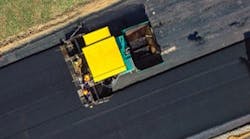Learn more about IIoT, read the June cover story, "Common methods, best practices for IIoT solidify."
Gaining operational benefits from the Industrial Internet of Things (IIoT) requires more than adding components and common protocols—it also requires users to shift their personal perspectives.
"IIoT isn't a switch that's turned on and off or a magical gemstone that's achieved because it evolves over time," says Chris Hamilton, industrial information technology/operations technology (IT/OT) director at Grantek Systems Integration, a CSIA-certified system integrator (SI) in Burlington, Ontario, Canada. "IIoT still requires users to look at what they're doing because they're already using Internet technologies whether they know it or not. Now, they need to consciously pick the concepts they need, get comfortable with them, evaluate areas where they can do better with IIoT, expand where possible, and add policy and governance where needed."
Hamilton reports that when the Internet and web first gained momentum in the 1990s, it took too many clicks to get from place to place online, but this eventually gave way to more seamless websites and better user experiences (UX) in the 2000s. "My big push is for a better UX, which includes asking why users have to go through six button clicks to get somewhere, especially when Google emphasizes requiring only two clicks," he says.
To improve Internet UX for clients, their systems and their customers, Grantek strives to implement each user's particular version of IIoT, so it will be the most suitable for them and their processes and goals. "System integration is still about getting a project done, so we have to shift from tinkering with the Internet to becoming specialists who can design IIoT systems that will be touched by hundreds of users," adds Hamilton.
This journey to fewer clicks and more effective IIoT means examining all the standard practices that clients and their customers are already using online. "I like it when two standards disagree because it's an opportunity to learn, take the best parts of both, and get to more overall improvement," says Hamilton. "Grantek uses industry best practices from companies like Rockwell Automation, Cisco and Siemens for network design. However, clients often have other kinds of systems in place, so they need to be evaluated using a network maturity model, such as Panduit’s. Once they have a plan for their future structure, they don't need to guess about their network or IIoT anymore. They can tell their OEMs and SIs what they need and how to do it, such as establishing logical segregation and firewalls for a VLAN or setting up remote access."
Read more: Common methods, best practices for IIoT solidify
Hamilton reports SIs and clients can find the right network and IIoT balance by "embracing their connected future," planning for it based on their overall business goals, using these goals to help IT and OT reconcile their different priorities, and absorb each other's skills. "OT knows how to keep operations running, but IT often has to be available 24/7/365, too," he says. "OT can leverage the IT world, but it can't burden IT financially without getting IT approvals that are planned and budgeted. This means OT must shift from doing tasks at the last minute that are often costly, and showing the ROI and risk avoidance that help get capital funding."
To develop standard IIoT policies and procedures, Hamilton adds that companies need to work with individuals and organizations that know both sides of the OT and IT fence, and can talk about controls, finances and IT. "This requires really listening to groups on the other side, learning what they're trying to accomplish and what they need, finding commonalities, and working through differences. It sounds touchy feely, but it works. At the root, we have to listen and learn about others' requirements, so we can provide the best solutions to help our clients grow."






